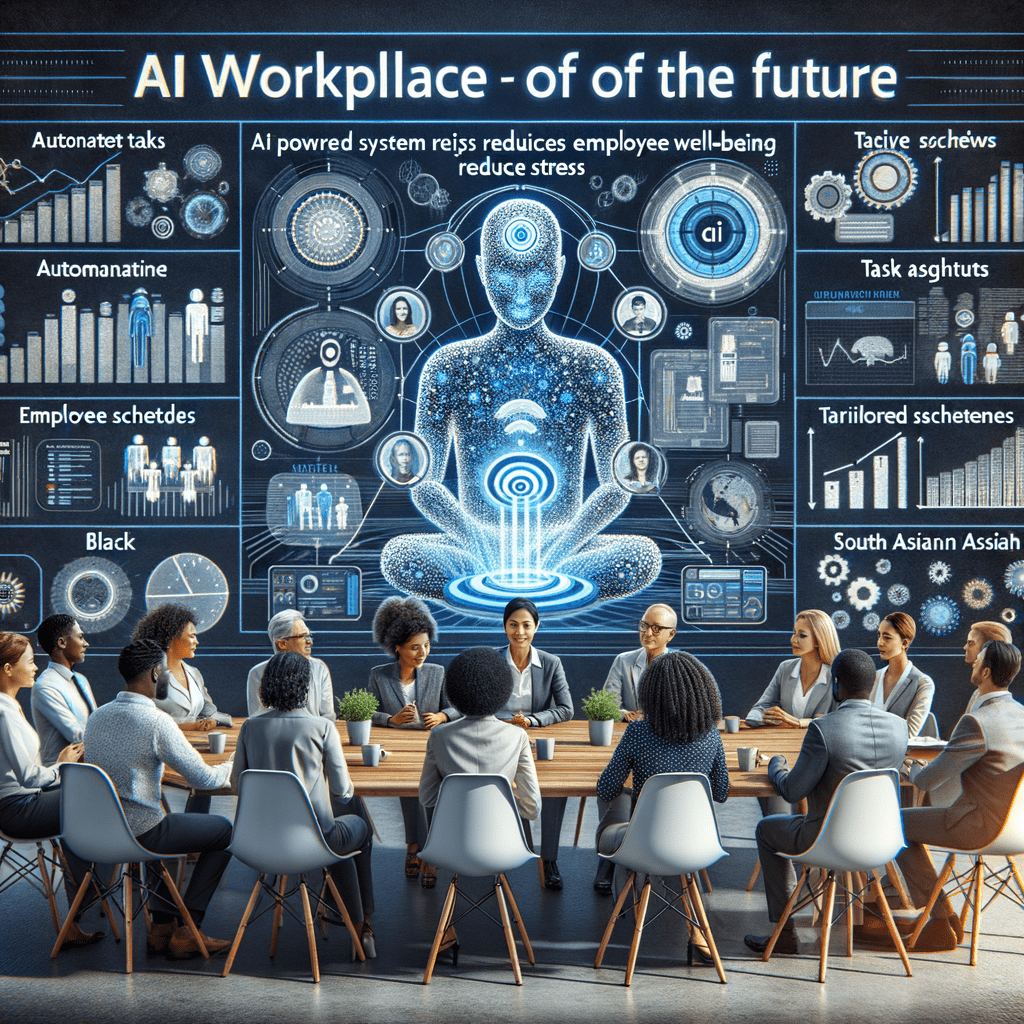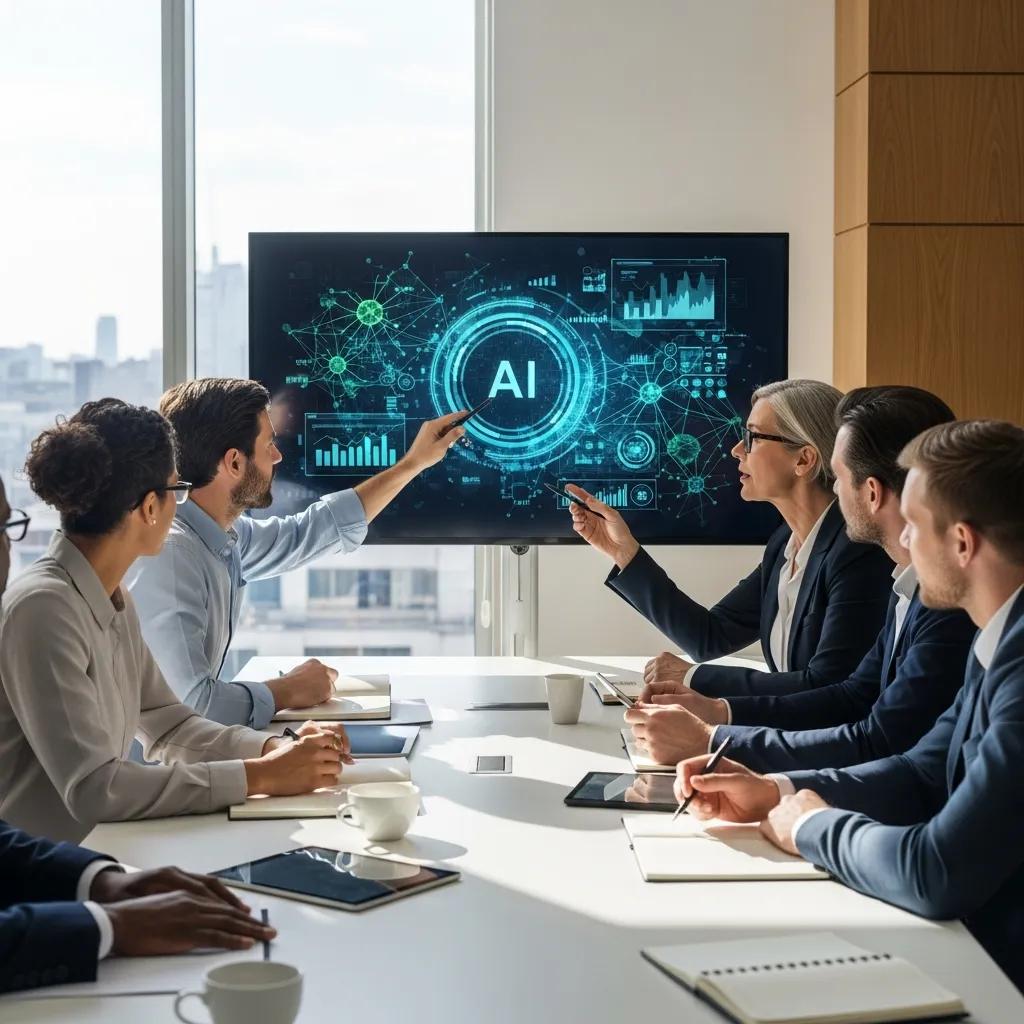Feeling overwhelmed at work? You’re not alone. Nearly half of US employees report substantial daily stress impacting their work. This isn’t just an individual problem; it affects the bottom line. This post will discuss how AI can reduce workplace stress, improving well-being and productivity.
Stress drains company resources, impacting everything from projects to profits. AI offers a solution. It helps address the very question of how to mitigate workplace pressures and stressors, ultimately boosting productivity.
How AI Can Reduce Workplace Stress: Automating the Mundane
Many jobs involve repetitive, time-consuming tasks like data entry, scheduling, and email. These tasks, while necessary, can cause significant stress.
AI excels at this type of work. Automating these tasks frees up staff for creative projects and strategic thinking. This reduces stress and improves job satisfaction.
For example, AI chatbots can handle many customer support questions. This allows human representatives to address more complex issues. Automating repetitive tasks with AI tools offers a way to improve employee experience by tackling work stress.
Using AI to Gain Insights into Employee Well-being
Companies are leveraging AI for employee well-being. AI analyzes behavioral data, like speech patterns and facial expressions, to detect signs of stress or burnout.
This technology provides real-time feedback. It can alert an employee to take a break or notify managers of potential burnout. Some tech, like stress-sensing smartwatches, offers personalized tips. This use of AI systems and innovative tools is crucial for monitoring employee well-being and ultimately learning how AI can reduce workplace stress.
Personalized Support and Stress Reduction with AI
Imagine therapeutic chatbots offering personalized cognitive behavioral therapy (CBT) exercises. These tools act like always-available support, addressing everyday stress triggers.
AI-powered programs can also help employees navigate internal resources. This simplifies access to employee assistance programs, especially helpful for mental health support. Offering mental health support, sentiment analysis from emotion recognition, and generating personalized recommendations based on behavior are important for reducing mental stress and promoting work-life balance.
How AI is Transforming the Workplace Environment
The physical workspace impacts mindset. AI and the Internet of Things are transforming work environments to reduce stress.
Imagine automated plant watering systems maintaining optimal air quality. Greenery reduces stress, so AI contributes to a healthier environment. AI can also adjust lighting and airflow based on employee activity. Leveraging AI sensors and image recognition for automating these workplace adjustments allows employees to complete tasks while feeling less stress. This can help remote workers as well since remote workers could integrate such technologies to maintain productivity increases. These examples of workplace automation directly contribute to answering how AI can reduce workplace stress.
Real-World Examples of AI Reducing Workplace Stress
The Cleveland Clinic used AI recruiting tools to automate offer letters, reducing HR workload. They shortened contract review times by 60%, freeing up time for skill-building. This improved efficiency in patient care and saved time.
At Moderna, over 3,000 employees use AI tools over 120 times per week. This accelerates tasks and transforms information gathering. Using natural language processing and machine learning algorithms enables these employees to leverage AI at an unprecedented rate, which also answers how AI can reduce workplace stress.
Addressing Potential Concerns about AI in the Workplace
Surprisingly, 77% of workers reported increased stress from AI integration, according to Forbes. Many companies expected instant productivity gains. Some employees struggled with incorporating the new technology.
There are also concerns about job displacement due to AI. This fear, fueled by media portrayals, is a legitimate concern. It goes beyond just mental well-being and delves into the future of work.
Open discussions about these anxieties are essential. Addressing the fear of AI and how AI can reduce workplace stress through natural language will lead to better implementation. Companies can offer support through resources like information on yoga and decluttering or even address financial stress by reducing gas costs. This addresses how AI can reduce workplace stress from multiple angles. Employee behavior and work stress are complex topics where HR teams and AI algorithms must work hand in hand to improve employee experience.
FAQs about How AI can reduce workplace stress
How can artificial intelligence tackle workplace stress?
AI can alleviate stress by automating tedious tasks, offering personalized wellness advice, and improving workplace communication.
How to reduce stress in the workplace?
Besides AI, stress reduction involves flexible work hours, mindfulness programs, and a supportive company culture.
How does AI help in the workplace?
AI boosts efficiency by automating tasks, providing data-driven insights, and improving communication.
How does AI make the workplace safer?
AI creates safer environments by monitoring hazards and automating risky activities. This lessens danger to staff, particularly in high-risk industries. This also answers how AI can reduce workplace stress for many professions like medical professionals. Through deep learning and natural language, AI can solve problems that create or contribute to a worker’s daily stress, which greatly improves the workplace.
Leveraging AI for a Healthier Workplace
AI reduces workplace stress through task automation, insights into well-being, personalized support, and a safer work environment. Addressing employee concerns is crucial for successful AI implementation.
While anxieties around AI exist, its potential to reduce stress is undeniable. AI allows workers to focus on more valuable tasks, improving engagement and performance. Using tools designed with AI in mind offers another option of reducing stress for the average employee and allowing them to remain productive at work by completing necessary tasks.
AI and machine learning offer innovative tools for navigating and understanding workplace dynamics. How AI can reduce workplace stress lies in providing employees with the resources and support they need. This includes personalized responses from AI chatbots, access to necessary resources, and improving overall workplace conditions.






